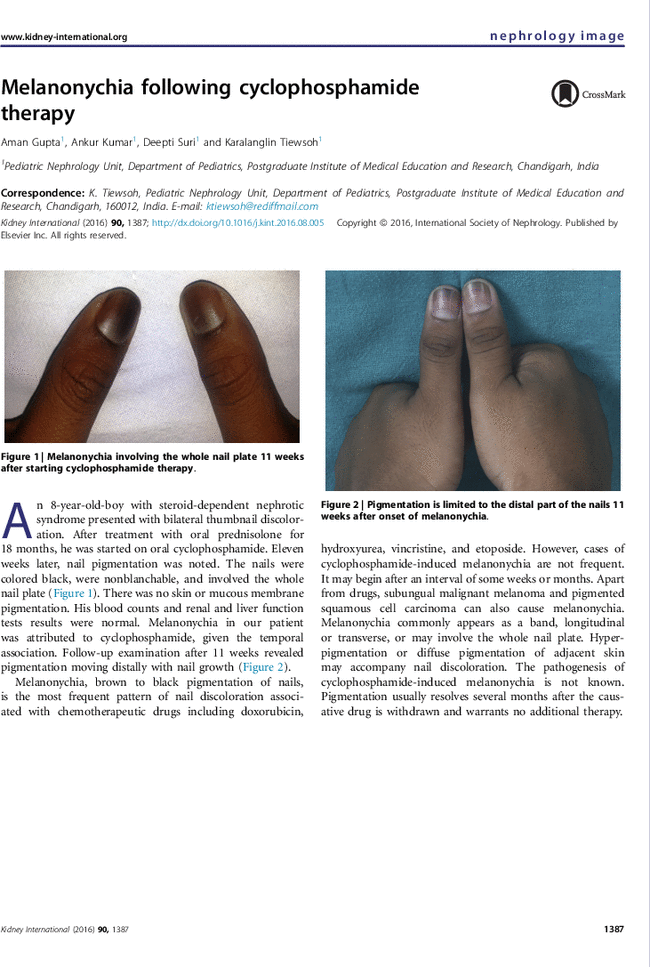Tag: nephrotic syndrome
March 6, 2019
Testing for and diagnosing nephrotic syndrome in children
Nephrotic syndrome explained: Nephrotic syndrome is a condition which affects the kidneys and the miniscule filtering system within it, called the nephrons. There is damage to these structures as a result of various reasons, and mostly in children the cause remains unknown, also known as idiopathic nephrotic syndrome. As a result of this damage, the
February 8, 2017
Excellent review on Nephrotic syndrome
Current issue of CJASN has an excellent review on Nephrotic syndrome written by Dr Emma and his team. It’s a must read for all pediatricians and fellows in nephrology! Minimal change disease (MCD) is a major cause of idiopathic nephrotic syndrome (NS), characterized by intense proteinuria leading to edema and intravascular volume depletion. Image Source
November 25, 2016
Melanonychia following cyclophosphamide therapy
Today, our colleagues from PGIMER Chandigarh publish in Kidney International, an excellent clinical sign- Melanonychia following cyclophosphamide therapy. 




